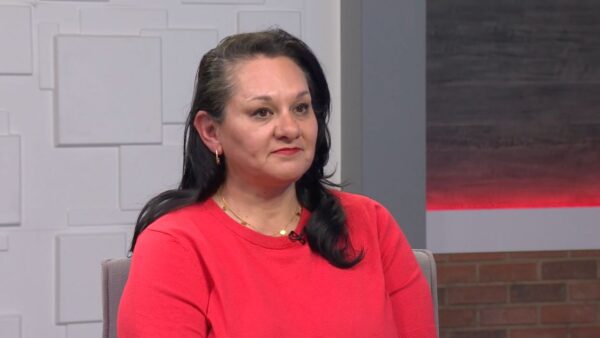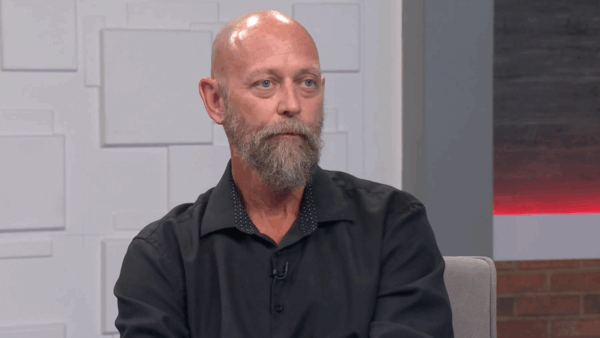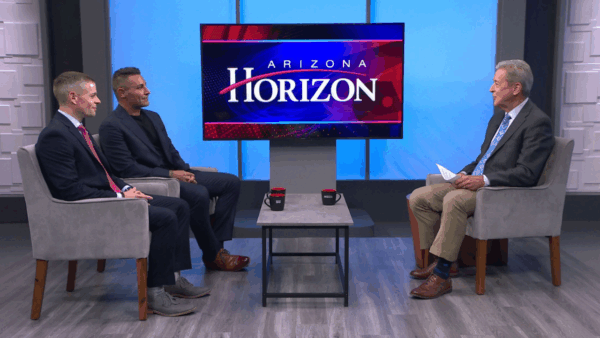Paul Johnson, the Dean of ASU’s Fulton Schools of Engineering, says Arizona employers are finding it difficult to find “qualified” engineers, and he explains what ASU is doing to reverse that trend.
Ted Simons: In our continuing coverage of Arizona technology and innovation we focus on the people who make those innovations happen. Engineers, the Dean of ASU's engineering school says state employers having a hard time finding qualified engineers. So the school is working on ways to recruit and educate engineering students and help keep those graduates in Arizona. Joining us now is Paul Johnson, Dean of ASU's IRA A. Fulton schools of engineering. It's good to have you here. Thanks for joining us.
Paul Johnson: Thanks for inviting me.
Ted Simons: Surprising about a shortage of engineers. What kind of shortage? What are we talking about here?
Paul Johnson: There's a shortage and it's going to get worse. So it's been mediated by the economy a little bit, but for a little while we have had sort of a demand and supply being okay. What we have in front of us is about 40% of the engineering work force is retirement eligible. Many of those people have held on to their jobs for during the weak economy, worried about their retirement accounts. We're starting in a phase where they will start retiring and the economy starting to pick up. We're seeing that in all the indicators of the recruitment with our students. For example, we have a career fair that we're holding in a couple weeks. We have our own career center so we get postings and keep track of the number of postings, keep track of the number of companies interested in the career fair. The number of postings is up 50% this year. The number of companies coming to the career fair has steadily increased during the weak economy and now it's really taking off again.
Ted Simons: Is there a certain type of engineer we're talking about? Is it across the board? Is it relatively focused? What kind of engineers are we see ago shortage of?
Paul Johnson: There's a pretty broad spectrum of engineers. Engineering skill sets, things like that. At the current time, if you talk to employers, they will say there's a shortage of people and sort of maybe the two to five year time frame of experience. Some people with early experience are looking for a lot of those and are having trouble finding that group of potential employees. They are also in certain areas in engineering. There's more demand than others. For example, the three primary areas now are sort of computer science, computer systems. A lot of that spurred by our iphones, all the Apps. Smart devices, I-Pads and things like that. Electrical engineering is another one of the areas. Mechanical engineering is another area.
Ted Simons: You mentioned the brain drain, folks that have worked on these kinds of things, developed these things for that matter. Getting older, moving on. Are there not enough young people to come around or are there enough young people but they just don't seem to be qualified? Not there yet? What's the dynamic?
Paul Johnson: I think we're in a situation where if you look at the numbers, so there's about depending whose numbers you use there's about 1.5 million engineers across the country. 40% of those retirement eligible in the next five years. Most of those will retire, if not within ten. The number of engineers produced each year, when we hit the phase when they are retiring the number of engineers produced is not going to match the rate at which those are retiring. We've got these new fields developing and you have new companies starting up all the time. It's not just a replacement of people that are retiring, it's every time an engineer invents something new and an industry sprouts up because of that, it's like you need a whole new flavor of engineers to help feed it.
Ted Simons: I was going to ask that. You got your Boeings, Intels, Raytheons, Honeywells. I imagine they are looking for folks. Is that the greater demand there or is the greater demand with these smaller start-up companies?
Paul Johnson: It's in both places. The larger companies are really worried about the brain drain as a result of retirement. The newer companies, they are the ones that are new companies are always sort of at the starting edge of technology. That's why there are new companies starting up. Trying to take new ideas, bring them to the marketplace. There might be devices, solutions, processes, or software. So they need students that are graduating, that are prepared in those. So usually in a university system the curriculum will lag a little bit in terms of where technology is going. It's really important to try to get your programs such that the students are matched up really well with the small start-up companies so they can just go right into them and be working for them.
Ted Simons: How much of an impact, and we hear this, that a lot of kids get their engineering degrees at ASU here in Arizona and then leave because there are more attractive jobs elsewhere. Now we're hearing folks that are here can't find enough engineers. Are the jobs just not attractive enough, are there not enough kids graduating? Give us that equation.
Paul Johnson: If you look at the data, actually Arizona employers, there's a good message in it for Arizona employers who hire students particularly from ASU. What sometimes people call the sticking rate of students is about at least where they are undergraduate students more than 70% of them are still working as engineers in the state after five to ten years of graduating from ASU. There's a strong regional preference of our students when they graduate to actually work in this area. So that's a really good thing. Local employers come hire our students there's a good chance the students will stay. At the advanced degree level, this is where there's more of the issue because the advanced degree, PhDs and masters degrees will look more regionally because they tend to come from all over the place. The difference is at the undergraduate level 70% of our students are from Arizona, 20% across the country and 10% international. At the graduate level students come from much farther away and many more places, so you only get 30 to 40% of those to stay in the state. That's where they are going where the attractive jobs are.
Ted Simons: So at the school what kind of plans do you have to recruit more students to retain them and to keep them in Arizona? Is there something you can do? Are there actually focused plans?
Paul Johnson: There really are. This is actually one of the fun things about being the Dean of an engineering school is to get to work on these. It's a topic particularly attracting young students to come to college in engineering. It's a topic that resonates with sort of anybody who has ever been an engineer, people in science fields. They want to help. The key thing, our strategy right now has been we want to make young potential college students very aware of what engineering is all about. There's stereotypes out there, you have to be good at math or whatever it is. The first thing we try to communicate to them what engineers really do. What I tell them, if you want to create things that don't exist, if you want to work on things that really matter, if you want to be the problem solvers, the innovators, if you want to start companies, look at engineering. Here's examples of all those things you can do. So we try to make that there and then we have our students at ASU work in the classrooms with teachers in the K-12 system so they can see the students in high school and below can see what a college student looks like in engineering, that they are enjoying what they are doing, they are having fun, they can tell them about the exciting things. We go down to fifth grade. We host the first Lego league in high school. We have summer programs. When the students come to us we have to make sure we keep them. Students go through first Robotics, they go through Lego league, they know competitions. They know technology can be exciting. Creating things can be fun. So we have actually had in the last four, five years totally reworked our program at the university so that in the old days and actually most engineering programs are like this. You come into the university and you have to make your way through physics and calculus and if you do that they talk to you when you're a junior. These days if you don't excite them with what you're doing, if they don't see engineering early on, they are going to go somewhere else in the university. So we have changed our program so we have this engineering from day one philosophy. We bring the students in. They are solving problems, creating things, doing real engineering stuff just as freshmen in the first week.
Ted Simons: It will be interesting to see how well that develops and how well we can minimize that particular shortage. Good information. It's good to have you hear. Thank you so much for joining us. We appreciate it.
Paul Johnson: Thank you.
Paul Johnson:Dean, ASU Fulton Schools of Engineering;























